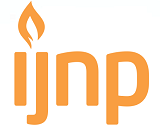Peningkatan Capaian Kompetensi Kognitif Mahasiswa Akper Pemkab Ponorogo Dengan Penerapan Peer-Assisted Learning (PAL)
DOI:
https://doi.org/10.18196/ijnp.1368Keywords:
Aplikasi, Peer-assisted Learning (PAL), kompetensi kognitifAbstract
Proses pembelajaran yang ditekankan saat ini adalah student centered learning, pembelajaran ini memberikan kesempatan mahasiswa untuk membangun sendiri pengetahuannya sehingga akan memperoleh pemahaman mendalam. Salah satu pembelajaran inovatif dengan strategi student centered learning yaitu Peer-Assisted Learning (tutor sebaya). Metode PAL mampu meningkatkan pemahaman (secara kognitif) pada tutor dan tutees, dikarenakan konsep-konsep dapat dijelaskan secara sederhana dengan menggunakan bahasa yang paling mudah difahami dan sesuai dengan level mahasiswa. Konsep ini dikenal sebagai konsep keselarasan kognitif (cognitive congruence). Tujuan penelitian ini adalah menganalisis penerapan metode peer-assisted learning (PAL) dalam meningkatkan pencapaian kompetensi kognitif mahasiswa.
Penelitian ini menggunakan desain quasy experiment dengan rancangan pre and post-test with control group design. Tehnik sampling menggunakan simple random sampling, dengan sampel sejumlah 60 mahasiswa semester empat yang terbagi menjadi dua kelompok perlakuan dan kontrol. Instrumen penelitian menggunakan multiple choice question. Data dianalisis menggunakan t-test, dengan α = 0.05.
Hasil uji statistik menunjukkan bahwa rata-rata nilai pre-test dan post-test mengalami perubahan signifikan (p value 0.000). Nilai rata-rata pre-test (42,40) termasuk dalam kategori tidak kompeten sedangkan nilai rata-rata post-test (84,27) sehingga termasuk dalam kategori kompeten. Sedangkan pada kelompok kontrol sebelum perlakuan nilai mean (40,67) termasuk dalam kategori tidak kompeten. Setelah mendapatkan intervensi non-PAL, nilai mean meningkat menjadi (69,60) termasuk kategori tidak kompeten.
Penerapan peer-assisted learning berpengaruh signifikan untuk meningkatkan kompetensi kognitif mahasiswa.
References
Brooks, J.G., & Brooks, M.G. (1993). In Search of Understanding: The Case for Constructivist Classrooms. Alexandria, VA: Association for Supervisio and Curriculum Development.
Brown, G., & Atkins, M. (2002). Effective Teaching in Higher Education. London: Taylor and Francis e-Library.
Buckley, S. & Zamora, J. (2007). Effects of participation in a cross year peer tutoring program in clinical examination skills on volunteer tutor's skills and attitudes toward teachers and teaching. BMC Med Education. 7; 20.
Depaz, I., & Moni, R. (2012). Using peer-teaching to support co-operative learning in undergraduate pharmacology. Biosciences Education Jaournal, 11; 98-108.
Eggen, Paul & Kauchak, Don. (2012). Strategi dan Model Pembelajaran Mengejar Konten dan Ketrampilan Berfikir. Jakarta: Indeks.
Falchikov, N. (2001). Learning Together: Peer Tutoring in Higher Education. London: Routledge Falmer.
Gunarya, A. (2011, Maret 31). Model Perilaku Belajar. Retrieved from http://repository.unhas.ac.id/handle/123456789/27
Henning, J. M., Weidner, T. G., & Mellisa, M. C. (2008). Peer Assisted Learning in Clinical Education: Literatur Review. Athletic Training Education Journal, 84-90.
Heron, T., Villareal, D., & Yao, M. (2006). Peer Tutoring Systems: Application in Classroom and Specialized Enviroments. Reading & Writtings Quarterly, 27-45.
Monks, F., Knoers, A., & Haditono, S. (2012). Psikologi Perkembangan: Pengantar dalam Berbagai Bagiannya. Cetakan 14. Yogyakarta: Universitas Gadjah Mada.
Mulder, H. (2006). Competency Based Trainning: What, Why & How? dalam Proceeding, Teaching Learning Procces & Assesment in Competence Based Education.
Roscoe, R., & Chi, M. (2014). Understanding tutor learning: knowledge building and knowledge telling in peer tutors explanation and questions. Review of Education Research, 77 (4); 534-574.
Ross, M., & Cummings, A. (2009). Peer Assisted Learning, A practical guide for medical teachers Edisi 3. UK: Elsevier.
Secomb, J. (2008). A systematic review of peer teaching and learning in clinical education. Journal of clinical nursing. 17, pp. 703-16.
Stone, R., Cooper, S., & Cant, R. (2013). The Value of Peer Learning in Undergraduate Nursing education: A Systematic Review. International Scholary Research Notice, 1-10.
Ten, C., & Durning, S. (2007). Peer teaching in Medical Education: twelve reason to move from theory to practice. Medical teacher, 591-599.
Topping, K. (1996). The Effectivenss of Peer Tutoring in Further ad Higher Education: A Typology and Review of the Literature. Higher Education, Vol. 32, o. 3, 321-345.
Vygotsky, L.S. (1978). Mind in Society: The Development of Higher Psychological Processes. Cambridge: MA: Harvard University Press.
Yu, T., Wilson, N., Singh, P., Lemanu, D., Hawken, S., & Hill, A. (2011). Medical students-as-teachers: a systematic review of peer-assisted teaching during medical school. Advance in Medical Education and Practice Vol. 2, 157-172.
Downloads
Published
Issue
Section
License
License
Articles published in the IJNP (Indonesian Journal of Nursing Practices) are licensed under a Attribution 4.0 International (CC BY 4.0) license. You are free to:
- Share — copy and redistribute the material in any medium or format.
- Adapt — remix, transform, and build upon the material for any purpose, even commercially.
This license is acceptable for Free Cultural Works. The licensor cannot revoke these freedoms as long as you follow the license terms. Under the following terms:
Attribution — You must give appropriate credit, provide a link to the license, and indicate if changes were made. You may do so in any reasonable manner, but not in any way that suggests the licensor endorses you or your use.
- No additional restrictions — You may not apply legal terms or technological measures that legally restrict others from doing anything the license permits.
Copyright
Authors who publish with IJNP (Indonesian Journal of Nursing Practices) agree to the following terms:
- Authors retain copyright and grant IJNP (Indonesian Journal of Nursing Practices) the right of first publication with the work simultaneously licensed under an Attribution 4.0 International (CC BY 4.0) that allows others to remix, adapt and build upon the work with an acknowledgment of the work's authorship and of the initial publication in IJNP (Indonesian Journal of Nursing Practices).
- Authors are permitted to copy and redistribute the journal's published version of the work (e.g., post it to an institutional repository or publish it in a book), with an acknowledgment of its initial publication in IJNP (Indonesian Journal of Nursing Practices).














